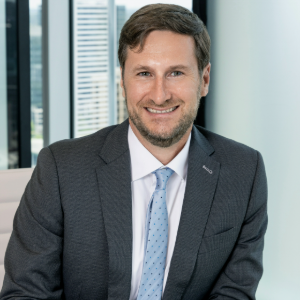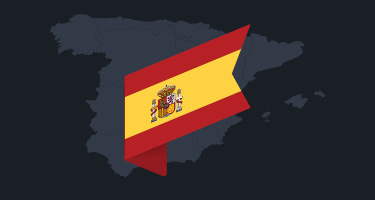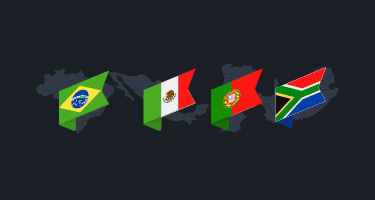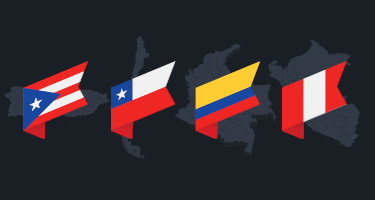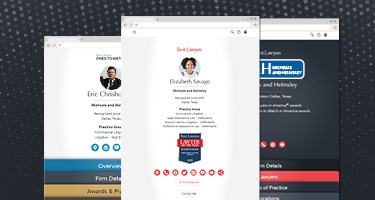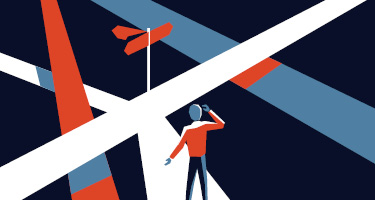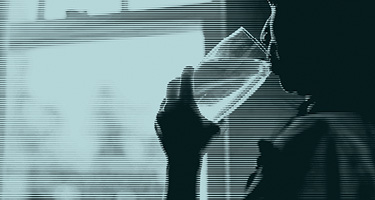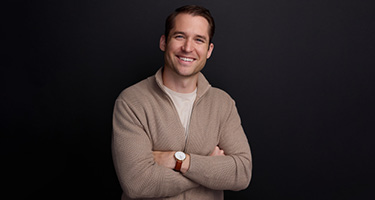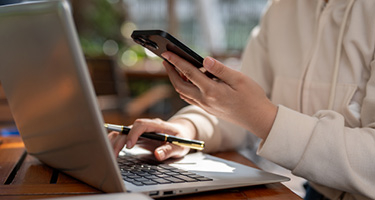U.S. Seeks to Collect on Up to $20 Billion in Delinquent Covid Loans
SBA begins referring to the Treasury Department roughly a million loans extended to small businesses and nonprofits during pandemic
March 8, 2024 I Wall Street Journal I Ruth Simon
Time is running out for small businesses and nonprofits that took out roughly one million government loans during the pandemic.
The Small Business Administration this week began referring as much as $20billion in delinquent Covid disaster loans with balances of $100,000 or less to the Treasury Department for collection. Another 10,000 delinquent Covid loans involving larger sums have already been sent to the Treasury.
The referrals highlight the continued challenges for the Covid loan program, which provided financing to nearly four million small businesses and nonprofits. The SBA says it has charged off roughly 20% of its $390 billion Covid disaster loan portfolio, an accounting figure that includes Treasury referrals and other circumstances such as bankruptcy, fraud or the death of the borrower.
Borrowers in default whose loans haven’t been sent to the Treasury Department can avoid the collection process by immediately requesting hardship assistance, according to the SBA. The SBA says the charge-off rate for the portfolio is in line with projections.
Some of the troubled loans went to borrowers who never intended to repay the debts. More than $136 billion of Covid disaster loans, or about one-third of the total, showed signs of potential fraud, according to the SBA’s Office of Inspector General. The SBA says it believes the amount of fraud is lower.
Other borrowers were in weak financial condition at the time they sought financing, are still struggling to recover from the pandemic, or have closed their doors. Some borrowers and advisers say poor communication, repeated changes in government policies and limited options for relief have created additional challenges.
“I’m talking to dozens of people every week who are dealing with the SBA’s struggle to service these things,” said Jason Milleisen, who advises distressed SBA borrowers and previously handled loan workouts for an SBA lender. “People are super confused.” Borrowers often receive conflicting information from different SBA employees, he said.
Mitra Ryndak’s restaurant, Cafe Aroma in Winnetka, Ill., was evicted by her landlord a few months after she took out a $136,000 Covid loan in 2020. Ryndak said she used the money to pay back taxes and wages, repay loans from family and friends, and cover other expenses. The landlord began looking for another tenant after she fell behind on rent.
Ryndak said the agency allowed her to make reduced loan payments for two hardship periods, but rejected her request to settle the debt for less than the amount owed. She said she paid the SBA $2,500 from the sale of her restaurant equipment.
In February, she received an email notifying her that the loan was more than 100 days past due and could be sent to the Treasury unless she pays nearly $4,000 to bring the loan current and requests another hardship accommodation. “I walked out with nothing in my hands,” said Ryndak.
The SBA declined to comment on individual borrowers. The agency said it recognizes the challenges many small-business owners continue to face and has worked hard to provide them with payment flexibility and innovative forms of assistance.
The SBA initially allowed borrowers to defer loan payments for up to 12 months, then extended the deferral period twice, to a maximum of 30 months, though interest on the loans continued to accumulate during that time. It has also rolled out a series of hardship accommodations for borrowers experiencing short-term financial challenges.
Borrowers who qualify can make monthly payments of at least 10% of the amount due, or a minimum of $25, for up to two six-month periods. Borrowers seeking additional relief can temporarily make payments equal to 50% and then 75% of the amount due before resuming normal payments after another year.
Until recently, the SBA required borrowers to repay most past-due amounts to qualify for a reduced payment. In February it began allowing borrowers whose loans were more than 60 days past due to make hardship payments.
Many borrowers welcomed the Covid loans, which carry a 30-year-term and a fixed interest rate of 3.75% for small businesses and 2.75% for nonprofits. But unlike forgivable loans issued through the federal Paycheck Protection Program, the disaster loans were designed to be repaid.
“You can lower your payments through a hardship plan, but it doesn’t change the fact that you owe the money,” said Mike Abelow, a bankruptcy attorney and trustee in Nashville, Tenn. Nearly every small-business bankruptcy he is involved in includes a Covid disaster loan, Abelow said.
John Migliore, a Connecticut restaurant owner, plans to apply for the 50% hardship reduction, after taking advantage of two initial hardship reductions. He said even the reduced payments will be a struggle. Migliore said he borrowed more money than he should have because he expected that business would rebound to prepandemic levels and that he would receive a $2.7 million grant from a federal program for restaurants that instead ran out of money.
“I want to call the government up and say ‘This is what the buildings are worth, this is what the restaurants are worth. Do you want them? I don’t,’ ” said Migliore, who owes the SBA $2.8 million.
At first, the SBA declined to refer delinquent Covid loans with balances of $100,000 or less to Treasury, saying the cost of collection outweighed potential recoveries. Members of Congress and the agency’s inspector general criticized that decision. The inspector general said the decision could motivate some borrowers to stop making loan payments, creating a larger chain of delinquency. SBA officials said they changed their plans after an additional analysis concluded that small-dollar loan collection efforts would pay off.
Some borrowers say they made the required catch-up payments, following the SBA’s instructions, but have been unable to get their loans out of the Treasury collection process.
The SBA said generally it can recall troubled loans from the Treasury if payment arrangements are made in the first part of the process; borrowers in that stage can still apply for hardship assistance, the SBA said. Loans can sometimes be called back once they are assigned to a collection firm, a process known as cross-servicing, but simply catching up on the payments isn’t sufficient, the SBA said. At this point, a loan can only be recalled under special circumstances, such as a death or bankruptcy.
The agency said it is constantly assessing its pandemic-relief programs and looking for ways to support small businesses while safeguarding taxpayer dollars.
The SBA is currently servicing about 3.7 million outstanding disaster loans, roughly 15 times the amount the agency was managing before the pandemic, according to an October 2023 report by the agency’s inspector general.
The agency set up a special servicing center specifically to work with borrowers who took out Covid disaster loans. The agency said it has made more than 86 million phone calls, sent more than nine million emails and mailed more than three million letters to borrowers who have fallen behind on loan payments.
One challenge: The SBA says it uses the information on loan applications to communicate with borrowers. It doesn’t automatically update that information unless the borrower provides a new address or phone number.
Unlike private firms, the federal government doesn’t need permission from a court to start collecting on unpaid debts. It can in some cases seize government benefits and tax refunds. Covid loans of $200,000 or more carry a personal guarantee.
The agency has less flexibility than private lenders when it comes to settling unpaid debts. SBA officials say they would consider special arrangements on a case-by-case basis. A broader forgiveness program would require congressional action.
Travis Johnson, co-owner of Bedzzz Express in Nashville, Tenn., said the SBA didn’t accept a request from him and his business partner to settle their Covid loan for less than the amount owed, a process known as offer in compromise. Johnson said the pair sent the SBA the remaining funds from the mattress business, or about $187,000, but still owe $287,000.
He said the co-owners took out a $450,000 Covid disaster loan in 2020. They closed the business, which had struggled to break even before the pandemic, in 2022 after sales didn’t rebound. They sold the inventory and franchise rights to another company that dissolved with $150,000 of the purchase price left to pay.
“Right now, there is no money,” Johnson said.
